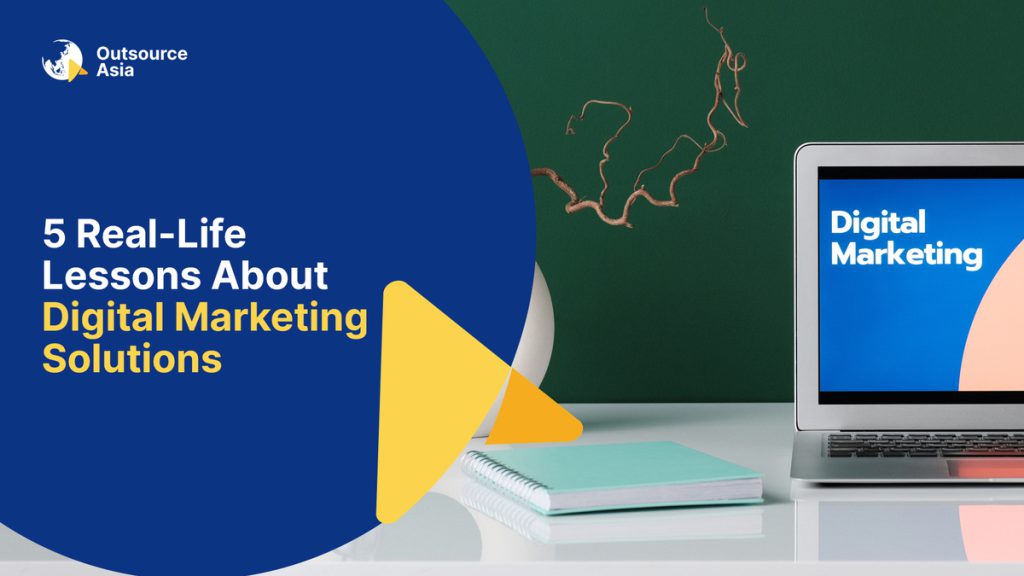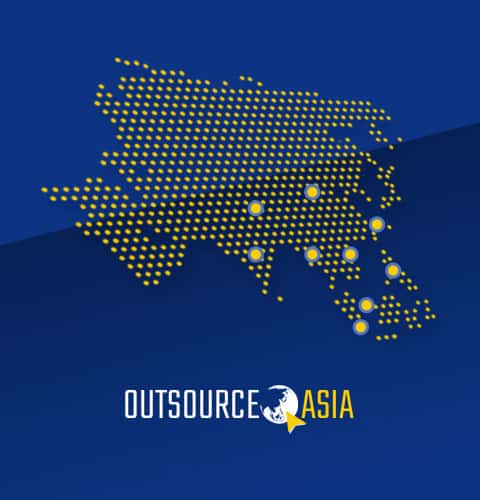
5 Real-Life Lessons About Digital Marketing Solutions
A digital marketer today must constantly learn and build upon their existing knowledge base to become more effective in their roles.
Keeping up with new technology and tactics on a day-to-day basis can feel daunting, especially in a world where technologies change rapidly. It takes constant learning to stay on top.
There are, however, some lessons that can only be learned through trial and error. That’s why we asked some seasoned digital marketers what lessons they had learned along the way.
We gathered the top 5 Real-Life Lessons About Digital Marketing Solutions. Keep these lessons in mind as you go about your daily digital marketing work.
1. Don’t let the platform distract you from the message.
Oftentimes, digital marketers spend months studying one tactic or platform, only to realize they are just learning the same big-picture engagement strategies.
Often, digital marketers focus so much on the platform over the message that they make things much more difficult for themselves. Instead of zooming out a bit and understanding the overall strategy behind it, we spend so much time learning one tactic for one platform. However, if you start with the message, you can easily adapt it for all these different platforms without breaking a sweat.
As digital marketers gain experience, they come to realize that the message is more important than the medium. A great marketer can adapt a message to suit any platform. This brings us to our next point.
2. Create seamless experiences across digital and real-world experiences.
CX (customer experience) was the key buzzword of 2019. Due to the cancellation of or deterioration of real-world experiences, digital CX became the focal point for consumers navigating a virtual reality on their mobile devices. Between late April and November, searches for ‘contactless’ experiences increased seven-fold, and companies improved their infrastructure to deliver seamless omnichannel experiences.
Today, consumers juggle digital channels and physical touchpoints like curbside pickup, and receive live updates on delivery status via email, text, or push notifications. Speed and personalization are enabled by AI technologies behind the scenes.
This makes it very important to create a seamless, frictionless experience between both the digital and real world. This allows the customers to be more immersed in your brand.
3. Numbers and creativity go hand-in-hand.
You need a compelling image, a compelling headline, and compelling copy to turn customers into fans. Most websites are barely comprehensible due to a merciless pursuit of advertising revenue, suggesting this isn’t widely understood. You literally have to fight to avoid ads in order to find the content you want.
There is a lot of merit in good design. As a brand’s relationship with its customers moves from transactional to relational, I’m amazed at the power of an honest “oops” email written in earnest from its CEO or a little hint of humanity from its customer service. This is what design is all about. There is no such thing as flawless pixels in design. Design is moving beyond treating advertising as crunching numbers and hitting targets and appealing to the right-side brain of the viewers. This moves marketers beyond businessmen and into storytellers. The most impressive designs do this without drawing unnecessary attention to themselves.
4. Observe, adjust, and act fast!
Marketers must remain nimble and flexible in an environment where change is the only constant. Since marketers had to burn their pre-pandemic calendars, 2020-2022 provided plenty of opportunities to flex their adaptive muscles. Amazon, for instance, threw everyone off by moving Prime Day into October, only for global sales to increase by 45% year-over-year to $10 billion.
It helped transform Black Friday from a set day on the calendar into a season-long sales event from now on because Prime Day jumpstarted holiday shopping weeks ahead of schedule. All these changes mean marketers no longer have to fly blind but can use digital tools to measure the effects of current campaigns for on-the-go analysis and optimization. In order to adapt to unexpected events swiftly (and with actionable data), winning marketers continually monitor what works best, revisit personas, and shift content strategies.
5. ‘Normal’ can’t be restored.
One lesson is already evident for 2023 as we look ahead.
Despite widely available vaccines, the past few years’ cultural shifts are too profound to allow companies to pivot back to their old marketing methods. The good news is that a lot of the changes outlined here actually improve customer experience and efficiency.
63 percent of global companies predict that customer needs and expectations will change after the pandemic. In addition, 54 percent predict an increase in customer demand for online purchases or services. After the crisis, consumers will be more careful about what to buy, who to trust, and who to communicate with.
Conclusion
To solve the challenges of this new reality, we need more efficient, more human use of digital technology. Marketers are rewarded for their creativity and flexibility in solving problems. In a constantly changing market, laser-focused customer data architecture, seamless omnichannel execution, and AI-powered personalization are the marketing tech must-haves for offering on-target customer experiences.
Sounds like too much to handle on your own? Focus on your core business and outsource digital marketing.
Outsourcing can make a big difference in how your business operates. Choosing the right partner is absolutely critical in ensuring the success of Digital Marketing Outsourcing.
Luckily, it’s easier than ever before to make use of an outsourcing company through partners like Outsource Asia who can connect you with the perfect partner for your back-office processes and IT needs.
If you need help in finding the right outsourcing partner, book a FREE APPOINTMENT with Outsource Asia experts today.


